The weekend’s standout story comes by way of Edward Luttwak, one of the so-called ‘premier military theorists’ in the West, openly calling for NATO intervention in Ukraine, lest the West suffer a “catastrophic defeat”:
Luttwak has been an advisor for U.S. presidents and the U.S. military, as well as other world militaries. He’s also served in the IDF, which could explain his brazen machismo and lack of concern for morality or global safety. Many in the ‘beltway’ consider him a sort of modern Clausewitz, though it seems more like he’s just the military version of constitutional law’s Alan Dershowitz—i.e. a mediocrity elevated to god-like status for racial reasons owing to his valence to Zionist supremacy.
But despite what I may think of him, his noteworthy call for NATO troops in Ukraine must be given the tribune of analysis if only for his influence in the very policy centers and control mechanisms in Washington that could make such a move happen. An earlier Spectator piece writes: “When Edward Luttwak speaks, world leaders listen — and now they must consider heeding his advice on Ukraine.” And so we must listen too.
But more notable than the eye-catching quote that’s got everyone talking is Luttwak’s claim that NATO countries are already in the early stages of planning various types of contingents to be sent to Ukraine:
This arithmetic of this is inescapable: Nato countries will soon have to send soldiers to Ukraine, or else accept catastrophic defeat. The British and French, along with the Nordic countries, are already quietly preparing to send troops — both small elite units and logistics and support personnel — who can remain far from the front. The latter could play an essential role by releasing their Ukrainians counterparts for retraining in combat roles. Nato units could also relieve Ukrainians currently tied up in the recovery and repair of damaged equipment, and could take over the technical parts of existing training programmes for new recruits. These Nato soldiers might never see combat — but they don’t have to in order to help Ukraine make the most of its own scarce manpower.
Interestingly, he frames everything around the urgency of an imminent Chinese attack on Taiwan, which further adduces his poor analytical abilities. This snippet from a previous article on Luttwak tells you everything you need to know about him:
Either way, in light of his statements on NATO members preparing contingents for Ukraine, we have the following from Stephen Bryen:
He writes that U.S. and Romanian troops are presently in Moldova for Joint Command Exchange Training and extrapolates that into the theory that Moldova is being prepped as a staging area to potentially take Odessa in the future. This comes after another drone attack on a radar installation in Pridnestrovie yesterday.
Not to mention this rumor:
I had mentioned in the comments the other day that there are rumors Russia is preparing a campaign for this summer of utilizing Su-34s for the first time to launch mass UMPK glide-bomb attacks on the Odessa and Ochakov regions from the Black Sea. It’s an interesting rumor in light of these developments as it brings to question whether it’s Russia upping the ante after latest signals of NATO’s increasing salivation over Odessa—or vice versa, NATO is getting nervous for the very reason that they realize Russia is set to increase the pressure on Odessa.
Two days ago Poland’s foreign minister Sikorski stated that NATO would establish an official “mission” in Ukraine:
Which he claims does not mean they intend to send troops, necessarily, but rather that they can begin to officially coordinate amongst each other as an alliance in helping Ukraine—or so he says.
Just days before the Luttwak piece, Unherd published this other gem:
The article sneakily disguises a call for NATO to assume control of everything West of the Dnieper River by couching it as merely providing air cover. The author thinks NATO should defend all Ukrainian cities west of the Dnieper with actual NATO troops and air defense systems. He argues this isn’t much of a threat to Russia as they would only be shooting down Russian missiles and unmanned systems and not killing Russian pilots, who do not stray beyond the Dnieper.
In many ways, all such recent calls appear to be disguised attempts—in one form or another—of floating the trial balloon of Ukrainian partition. Why are they going about it this way? Because to outright say the word partition would be a devastatingly demoralizing blow to Ukraine, and would be rejected straightaway by Zelensky and co. But to first slip the idea in subtly and diplomatically, they’ve dressed it up as some heroic act of loyalty and allegiance, when in reality you can hear the burbles of talks growing louder recently about the inevitability of partition being the only realistic solution.
Recall I had already reported that once again, a new NATO summit this summer aims to dangle membership in front of Zelensky—just as they did last summer—and this time there’s rumors increasingly heavier ‘hints’ will be imparted about parting out Ukraine in exchange for such promises. We wrote when Macron first floated French deployment that part of the reasoning could be to merely secure the Dnieper to force a Korean style DMZ partition onto a recalcitrant Putin. In some ways it would be a perfect crowning ‘victory’ for NATO, which would allow them to sell it as their having stopped Putin in his tracks without firing a shot.
This common thread plays into what I wrote last time about the rumored ‘October Surprise’, where Ukraine could declare its new borders without Donbass. It seems a lot of movements appear to be heading toward this NATO-backed attempt to strongarm Russia into a DMZ. When would it happen? Precisely when Russian forces begin “breaking through” Ukrainian lines in force, presumably if and when Russia launches the much heavier offensives everyone expects in a few months.
But what’s important to note, is that no one country wants to be left to take the brunt of the Bear’s retaliation alone; nor even two or three of them together. That means such an action would likely only occur if a coalition of scaredy-cats was formed, and the chances of that are not great.
On that note, Luttwak ends his own earlier article with the following watery admission:
So, U.S. could provide a max 40k troops—recall most of the 101st stationed in Romania had already been redeployed to Jordan last year. Luttwak agrees that it would take most of the main NATO stalwarts for this plan to work, and they have already signaled a no-go. All combined, those countries could provide maybe 150-250k troops maximum, and that’s on the optimistic end. Meanwhile, Russia already has an entire fresh 500k man army raised by Shoigu waiting for them, which was created precisely to counter-act the new NATO threats, as I reported long ago. That’s not to mention hundreds of thousands of more reserves troops, including the conscript forces and national guard, that Russia could bring to bear if worse came to worse.
On that note, there’s one brief topic I wanted to cover and clear up. When Macron launched into his cringeworthy performance, the reasoning he used behind the bravado of sending troops against Russia was that “France is a nuclear power” and thus has nothing to worry about from Russia. This was followed by many French cheerleading responses on social media that highlighted France’s impressive 4th rank in world nuclear powers, after Russia, U.S., and China. France has ~300 nuclear weapons which, they say, is enough to “destroy Russia” though not the whole world.
There is a big misconception that laymen have about nuclear weapons. 300 sounds like a lot of missiles, because most people assume it to mean 300 actual individual missiles. In fact, France’s nuclear armament is not as impressive as it sounds.
You see, in the 70s and 80s, France totally scrapped the ground component of its nuclear triad—i.e. siloed ICBMs. It now has only the ballistic submarine and limited air component, the latter of which is not even worth talking about as it is a small amount of ASMP-A nuclear cruise missiles, with limited range (~300km), launched by Dassault Rafale jets. There is very little chance such a jet could even get close to Russian air defenses, much less hit any important Russian cities or sites with such a short-ranged missile, so this poses very little threat beyond the frontline-tactical, and can be discounted for the sake of this discussion.
The only moderate threat France has is therefore in its ballistic missile subs. It has a grand total of 4 of them, and only 1 is usually even active at any given time. These subs each have 16 x M51 nuclear missiles, similar to the U.S. Tridents. Each of these missiles can carry up to 10 MIRV’d warheads, though the normal load is said to be 6. That’s the entire French nuclear capability right there: 4 subs which have 16 missiles each = 64 total missiles. And each of those missiles with around 6 independent nuclear warheads, for 290 total listed naval warheads (which means some of the boats have less missiles/warheads).
Ergo: the only nuclear threat that France can possibly pose to Russia lies entirely in 4 aging missile boats, each of which can launch 16 missiles. In a nuclear war scenario, or such a scenario where Russia suspects that France is going to attack, we must take into account some non-zero chance possibility that Russia is tracking French subs with its own hunter-killer attack submarines and can take them out even before they launch their missiles. Of course, ballistic missile subs are designed around the philosophy of stealth, and evading their predators, but 1) Russia’s underwater capabilities cannot be underestimated and 2) Russia has ~35 attack subs to France’s 4 boomers—the odds are heavily against those 4.
What I’m saying is: there is a chance that in such a scenario, Macron would not even be able to launch a single missile, or perhaps only 25-75% of his missiles, as his subs would be taken out before they’re even ready to go.
But let’s assume for the sake of argument, the subs are able to launch most of their missiles. Both Russia and the U.S. have what’s called midcourse interceptors. These are interceptor missiles meant to take out ballistic missiles in the boost or midcourse phase, even before they potentially unload their MIRV’d warheads, which typically happens in the late midcourse or terminal phase.
From the Almaz Antey family, Russia has one contingent of the new S-500 Prometheus as well as the S-300VM and -P families and S-400 variants meant for ballistic missiles; Russia claims the S-500 in particular can take out ICBMs even at the earlier boost to midcourse phase.
But the real final buck-stopper is Russia’s true strategic missile defense system: the A-135, and A-235—also called Nudol. The A-135 is specifically designed to take out nuclear ICBMs, rather than being a jack-of-all-trades like the S-400/500 systems. But it is a final stopgap system as the A-135 missiles, which are called 53T6, themselves are nuclear. But they are neutron bombs instead of regular fission atomic bombs. They shoot up at a mind boggling acceleration of 0 to Mach ~10 (some sources, like Wiki, have it Mach 17, but I believe 10 is more realistic, as per Russian domestic sources) in only 3-4 seconds, pulling 200gs. Once they reach the altitude of over 80km where the incoming nuclear ICBM or MIRV’d warheads are approaching, the neutron bomb detonates which essentially causes the enemy’s nuclear RVs (re-entry vehicles) to go inert, by chemically defusing them:
For anyone interested in more information on how the AA-84 “neutron bomb” warhead works, you can see more information here.
How does the overall system work? The A-135 gets tracking information from Russia’s most powerful and widespread early warning missile system radars, which are positioned all over the country—and in space, as satellites—and are networked with the A-135, as well as S-500/400 interceptors:
This includes huge arrays like these, which can detect missile launches from thousands of kilometers away:
The A-135 missiles themselves have 5 main launch sites, each with about 12-16 silos of missiles, for 68 total missiles:
There are at least 68 active launchers of short-range 53T6 endoatmospheric interceptor nuclear armed missiles, 12 or 16 missiles each, deployed at five launch sites. These are tested roughly annually at the Sary Shagan test site. In addition, 16 retired launchers of long-range 51T6 exoatmospheric interceptor nuclear armed missiles, 8 missiles each, are located at two launch sites.
By the way, Russia used to have far more, about 21 total sites instead of 5 but the longer range 51T6 missile component of the A-135 system was dismantled in the 2000s. However in the future they will again likely expand it with the new systems in the pipeline—though even the current amount is still much more than U.S. has in equivalent, which is a total of 44 interceptors.
So, Russia has 68 nuclear-armed (neutron bomb) strategic interceptors, each of which can take out not only one ICBM, but dozens of MIRV’d warheads, if they have already been released. Without going into too much detail, as there are differences between MIRV (Multiple Independently Targetable Reentry Vehicles) and MRV (Multiple Reentry Vehicles), but the short of it is that the 53T6 missiles from A-135 system obviously have a wide range when their nuclear warhead explodes. Depending on whether the enemy missile is MIRV or MRV, and when the MIRVs were released, it’s possible that a single 53T6 can zap multiple if not all of the independent re-entry vehicles, given that the neutron effect explosion of the 53T6 will ‘irradiate’ a wide area in the endoatmospheric zone. MIRVs don’t separate as widely as people think—here’s one timelapse photo from a U.S. Peacemaker MIRV test to illustrate several of them coming down kilometers apart:
That means a single Russian 53T6 can potentially take out all the 6-10 MIRVs on a French M51 SLBM missile.
If all 4 of France’s ballistic subs launch their SLBMs, we will have 4 x 16 = 64 total missiles. The Russian A-135 has 68 interceptors, each of which can potentially take out multiple objects, if they are not far from each other. This of course is backed by many other Russian systems like the S-500 which will be picking up the loose ends. If Russia gets an early detection on the launches, the hyper-accelerating A-135 system can potentially take out all the French SLBMs before they’ve even dispersed their MIRVs in the final descent phase.
If some MIRVs are released, then there’s good chance the neutron effect will deaden them if they are relatively close together, which there’s a good chance of at the early stage, before they disperse to wider individual targets. Some could get through, but that’s if: 1.) the Russian A-135s didn’t take out the missiles in midcourse phase before they even opened up the MIRVs and 2) if Russian attack subs didn’t take out at least one or two of the French subs, vastly limiting the attack saturation.
In conclusion: given the fact that the entire French nuclear arsenal resides in just a measly 4 ballistic subs, and given that those subs can fire 64 total missiles, which hold virtually the entire usable French nuclear arsenal; and further given that Russia’s A-135 system alone has 68 missiles, backed by hundreds more from secondary redundancies like the S-500 and special ABM variants of S-300/400, as well as possibly some extant versions of the A-235 Nudol—meant to eventually replace the A-135 system; all of these ultimately give a fairly high chance that Russia could in large part stop or blunt a French nuclear first strike attack.
Certainly, France would not be able to “destroy all of Russia”—not even close. Even if the A-135s neutralized 75% of the MIRVs, with a few getting through—the S-500 cleaning up a few of the remainders—but even if a few French TN-75 MIRVs made it through, each one is 100 kilotons; and while that would do a decent amount of damage, it’s not enough to even take out entire large cities let alone the whole country. France, of course, would cease to exist, while Russia would suffer relatively minor damage. Of course, no nuclear damage is “minor” in the classic sense, but compared to the opponent literally ceasing to exist as a civilization, it would be comparatively inconsequential.
Let’s not forget that some of France’s M51 SLBM missile tests have failed in the past, and NATO in general is greatly backsliding in this regard: recall the recent German frigate missile fail debacle from just last month. So even if Russian attack subs didn’t find the French boomers first, there’s no guarantee the SLBMs would even make it out of their decrepit tubes.
That is all to say that Macron’s bluster is without much substance to back it up. France is precisely the size of nuclear power that Russia could fairly confidently deal with in a nuclear exchange scenario. It’s the ability of the U.S. mass saturation that would be mostly unstoppable—but France’s 4 measly submarines, the readiness rate of which is highly questionable, with only one of them active at any given time? That’s not threat enough to justify Macron’s boots-on-ground wager.
Either way, recall that none of these countries have the armaments sustenance capacity for a high intensity, long duration conflict:
—
To move on, a couple new articles I’ll post without much commentary only for those interested, as they mostly rehash the same ongoing concerns, but the headlines at least will give a continued gauge of the current mood:
There’s one interesting observation about the above, second article, from which I posted the artillery shell graphic. It notes how the West is unable to ignite the manufacturing prowess necessary to compete with Russia.
One thing it made me realize is that most people seem to take Ukraine’s 155mm shell sustenance as a kind of “given” even if the much-hyped U.S. funding doesn’t materialize. The article mentions how the U.S. currently produces 28,000 shells per month even at full capacity, 24-hour operation of its factories. However, there are plans to allegedly open another factory—a General Dynamics Ordnance plant in Garland, Texas—which, last I heard—is ‘stuck’ in development with a pending ‘environmental review’, which is likely a legalese way for someone in the Biden admin. to block its opening.
But even if it were to open and U.S. got its planned boost to 80k or even 100k shells per month sometime next year. The current going shell price seems to be around $3000:
The $8489 number I believe is what Rheinmetall is paying in Germany.
So, even the current 28,000 monthly production x $3000 is costing $84 million a month, or $1 billion per year. 100,000 shells per month at that rate—and the price may even go up in the future—would cost a whopping $300,000,000 per month, and nearly $4B per year. Without a major ongoing aid package, there is simply no way that the U.S. will continue stealthily pumping $4B just for Ukraine’s 155mm shells—that’s not counting the countless other armaments they need on a daily basis. This is one aspect I have a feeling no one has looked at: they simply “expect” that no matter what happens, Ukraine will continue getting its basic artillery shells, at the minimum; but who said that was a given? There is simply no mechanism for upwards of $4B yearly to be doled out for free without special congressional accommodation—after all, the presidential PDA (drawdown authority) is mostly gone.
This could explain some of the reasons behind all the recent panic and talks of NATO deployment.
The funding situation continues to look hopeless, anyway:
As a last topic:
Another point of urgency—recall all the talk about Kharkov heating up. Now even Zelensky’s gray eminence, Yermak, is admitting to the possibility of Russian forces moving on Kharkov soon:

What’s interesting is that they quickly rolled back the statement with a ‘correction’, claiming that Yermak’s spokesperson said his words were misinterpreted and that he didn’t mean Russia would launch a ground assault on Kharkov, but rather air attacks. However, I’m skeptical because in the original statements Yermak also mentioned a new Russian “mobilization” which would be in line with the ground assault angle. I suspect he may have realized after the fact that his words would create too much ‘panic’, and decided to downgrade them, even though the downgrade doesn’t make sense considering Russia has already been unleashing mass strikes on Kharkov, including cruise missile attacks on its power infrastructure.
This is reinforced by a continued stream of videos out of Kharkov showing citizens fleeing:
Last few sundry items:
Check the dates on this quite poignant before and after:

Here’s the video of Deputy Secretary of State Kurt Campbell making the statement that spurred the headline above:
“We have assessed over the course of the last couple of months that Russia has almost completely reconstituted militarily,” said Deputy Secretary of State Kurt Campbell at an event hosted by the Center for a New American Security.
You see, in reality, they just make up whatever assessment fits the current model of narrative or agenda it’s convenient for them to push. When the agenda called for valorizing Ukraine, they called Russia weak and ‘destroyed’. But now that they see the only way to stop Russia is to get a unified Europe involved, they characterize Russia as not only totally ‘rebuilt’, but even—as per the second half of his statement—having “newfound capabilities” which now—surprise, surprise!—happen to pose a threat to Europe too!
—
More Bradleys and other NATO kit arrive in Moscow—soon Russia may have more Bradleys, Abrams, and Leopards than Ukraine itself:
—
Lastly, I’ve written a lot in the past in regard to debunking the common Western misconception that Russia has a ‘Soviet-style top-down centralized’ command system which is caricaturized as worker-bee drone soldiers merely mindlessly following commands from central HQ. I’ve said time and time again how Russia not only has an NCO system, but the soldiers themselves are taught initiative and leadership abilities, just like the West claims to teach their ‘superior’ troops.
Here’s a recent example of this, a Russian soldier named Rodimir Maximov, introduced as a ‘Private’, was just awarded with state honors during an assault in the Novomikhailovka area. His commander was wounded at the very start of the assault, and Maximov immediately took over, issuing commands to the squad with total autonomy. Even more telling was that once he radioed HQ, they basically told him to hold down the fort and gave him leeway to act as he saw fit, even as the enemy launched multiple counter-attacks—there was no ‘Soviet-style’ one way marching orders as the dimwit Western military ‘experts’ would have you believe. The command gave him full autonomy for two full days, according to the story, as they coordinated reinforcements to come relieve the assault group which had taken the AFU fort.
After his interview below, you can see the deputy commander of the group and then footage of Maximov’s heroism during the opening of the assault. During the footage, you can clearly see the mere ‘private’ displaying clear signs of well-schooled leadership abilities, with no signs of any “drone-like” behavior:
The feat of Private Maximov:
A soldier of the army corps of the Vostok group of forces, private Rodimir Maksimov, destroyed 27 Ukrainian militants during the capture and retention of a Ukrainian Armed Forces stronghold in the Novomikhailovka area. Acting as part of an assault unit during the capture of a Ukrainian Armed Forces stronghold in the area of the settlement. Novomikhailovka in the Maryinsky direction, private Rodimir Maksimov managed to outflank the enemy and inflict fire damage on him, personally killing three Ukrainian Armed Forces servicemen, which allowed the assault group to enter the enemy positions.
Despite the injuries received during the battle, the serviceman continued to perform the combat mission. When the enemy, in an armored vehicle with forces up to the squad, attempted a counterattack on the line occupied by our assault group, he, allowing the enemy to reach the distance of guaranteed fire destruction, destroyed the attacking group of the Armed Forces of Ukraine in its entirety with fire from a Kalashnikov machine gun .
Over the course of two days, Rodimir Maksimov, destroying the suitable infantry of the Ukrainian Armed Forces, with heavy fire from the PKM thwarted three more attempts by the enemy with superior forces using tanks and armored combat vehicles to recapture the positions held by our assault group and prevented the loss of the defended strong point.
In one of the episodes of the battle, Rodimir, overcoming the pain from his injuries, personally destroyed a group of Ukrainian Armed Forces servicemen dismounted from an American-made MaxPro armored personnel carrier with machine gun fire . The Max Pro crew began to maneuver to retreat and fell into the kill zone of our ATGM crew, as a result of which they were destroyed.
Until the arrival of reinforcements and subsequent evacuation, the fighter continued to staunchly defend and hold the occupied stronghold, personally destroying up to 27 enemy troops. For the heroism and courage shown during combat missions, private Rodimir Maksimov was presented by the command with a high state award.
Compare that with the below, and you decide which side has the better soldiers:
Your support is invaluable. If you enjoyed the read, I would greatly appreciate if you subscribed to a monthly/yearly pledge to support my work, so that I may continue providing you with detailed, incisive reports like this one.
Alternatively, you can tip here: Tip Jar





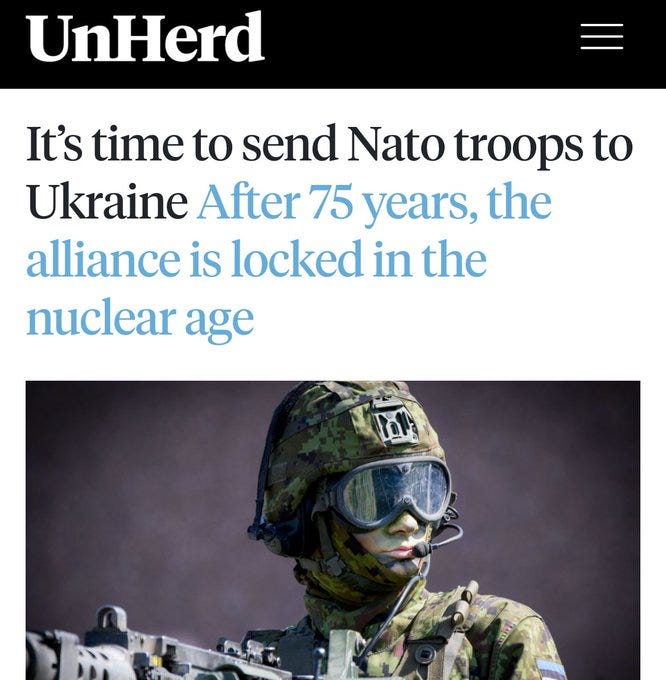



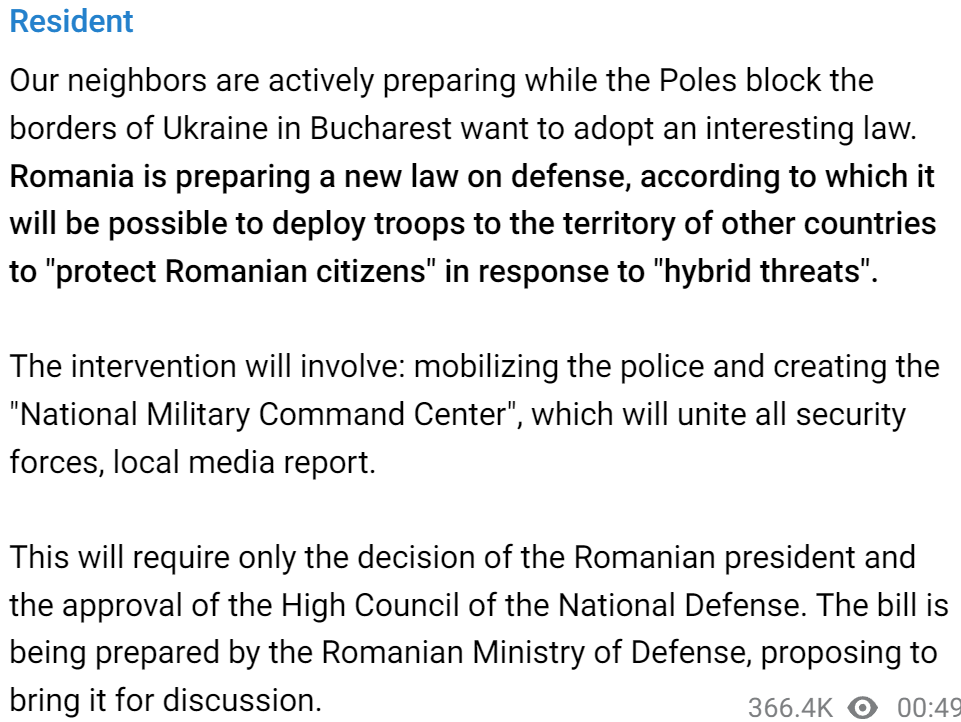
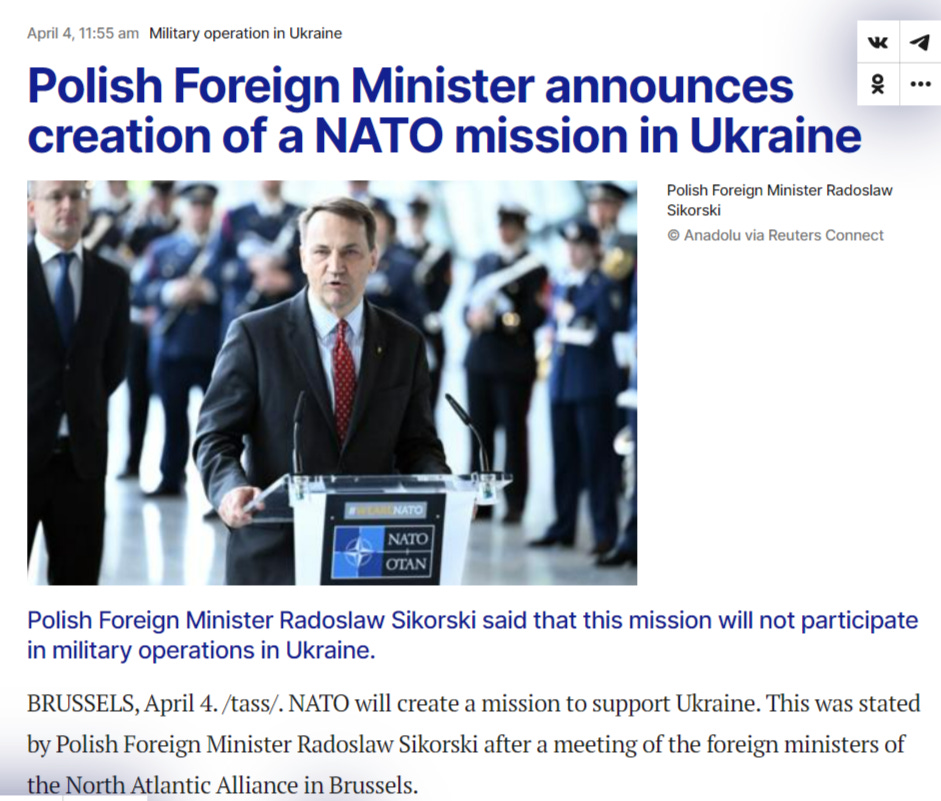
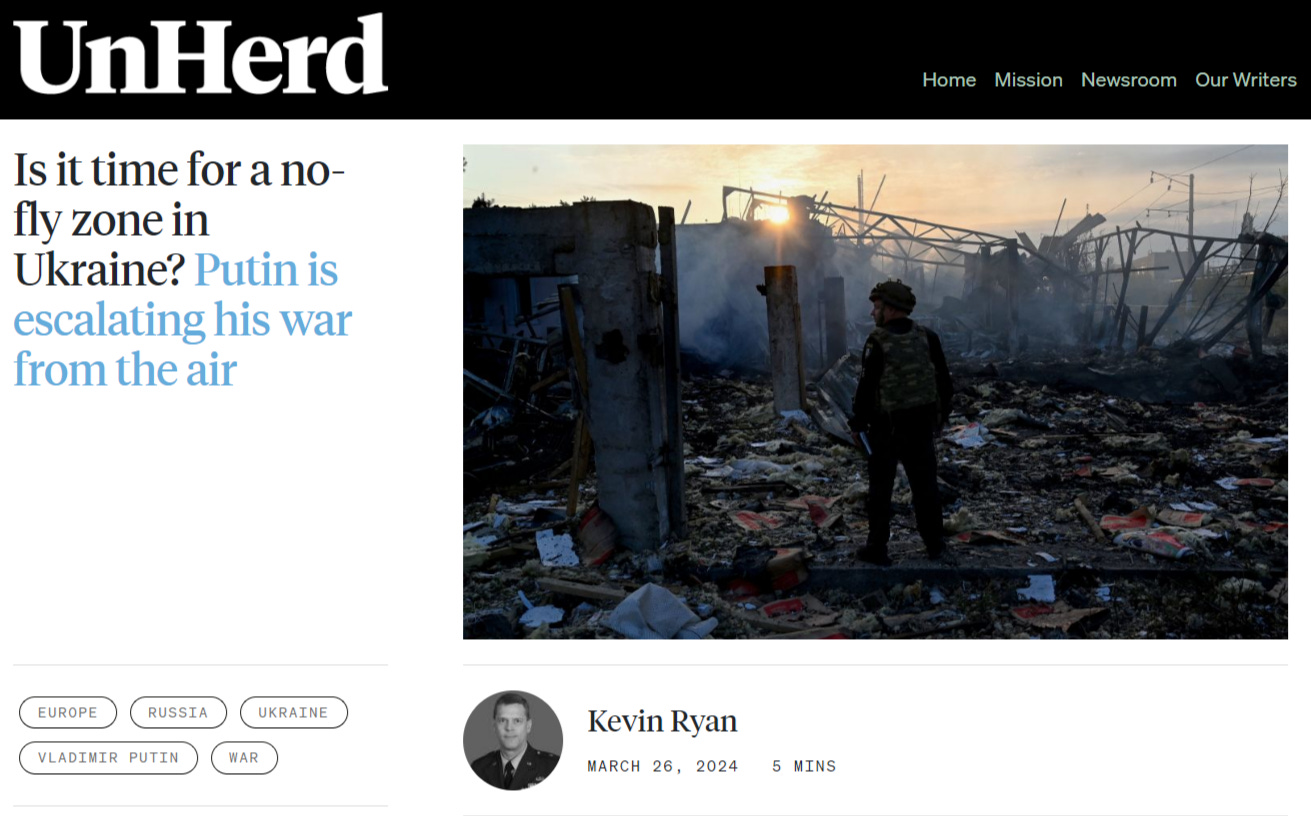
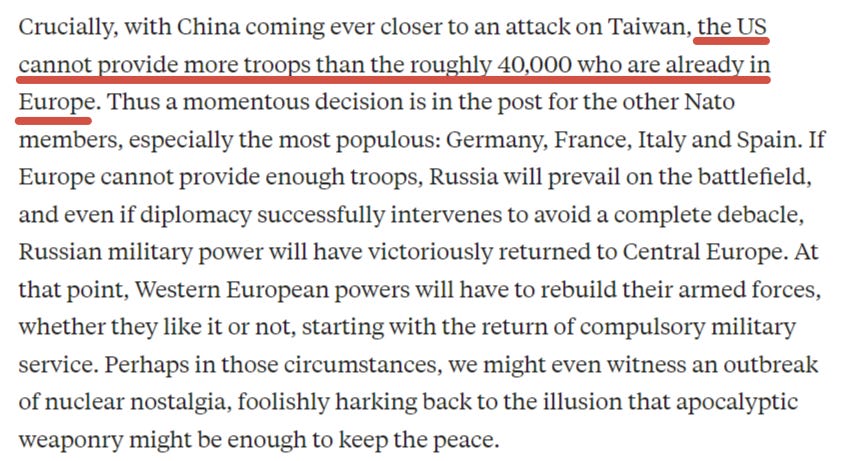



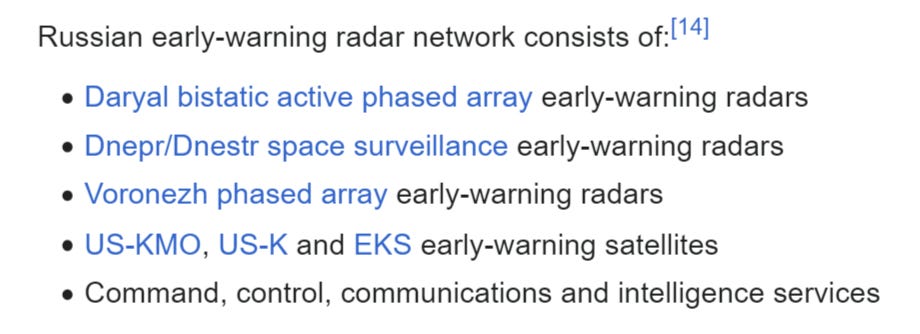
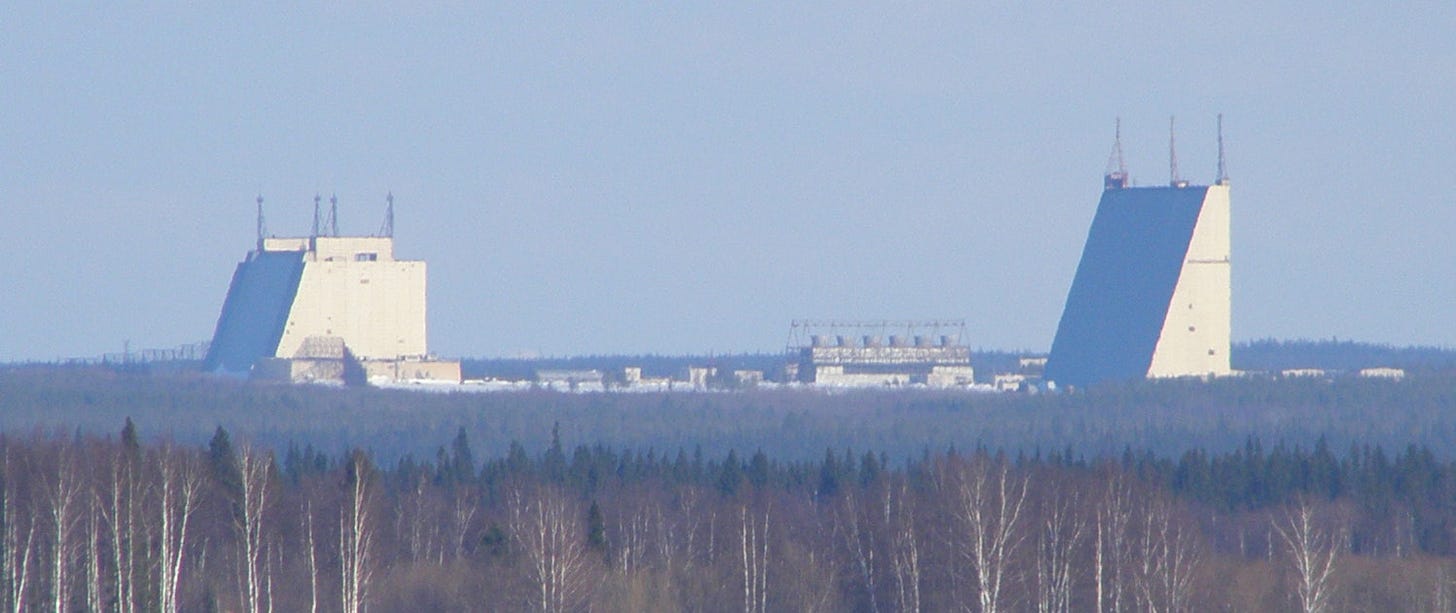
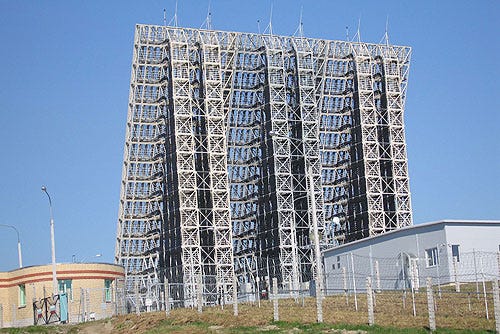
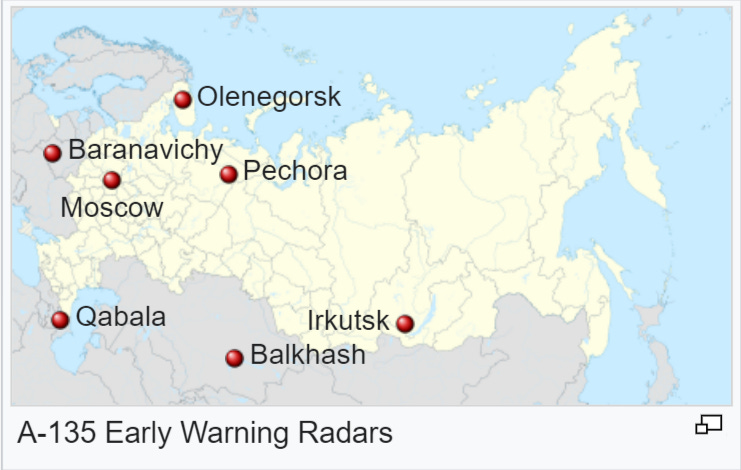
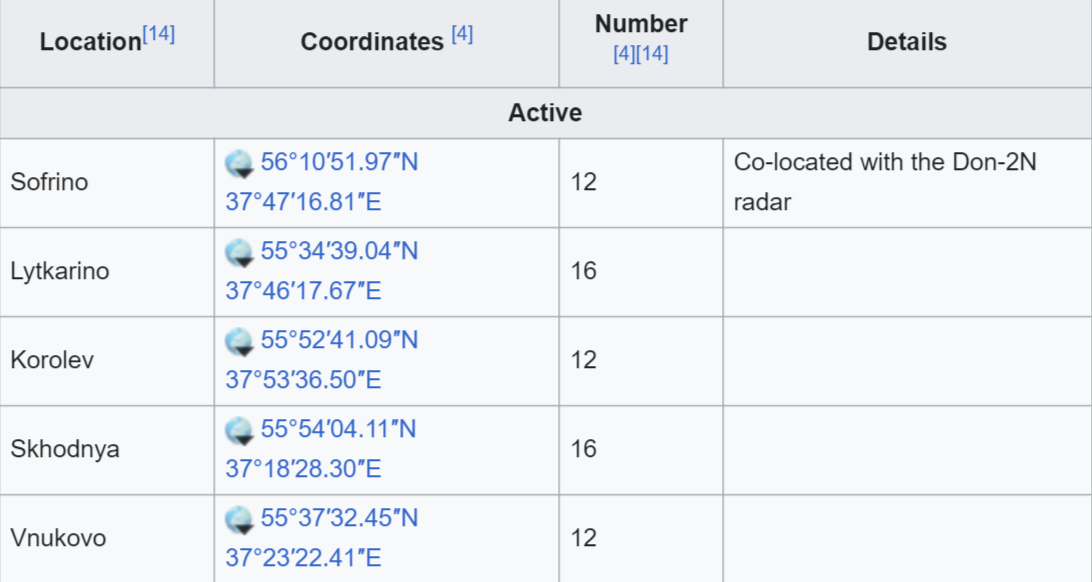
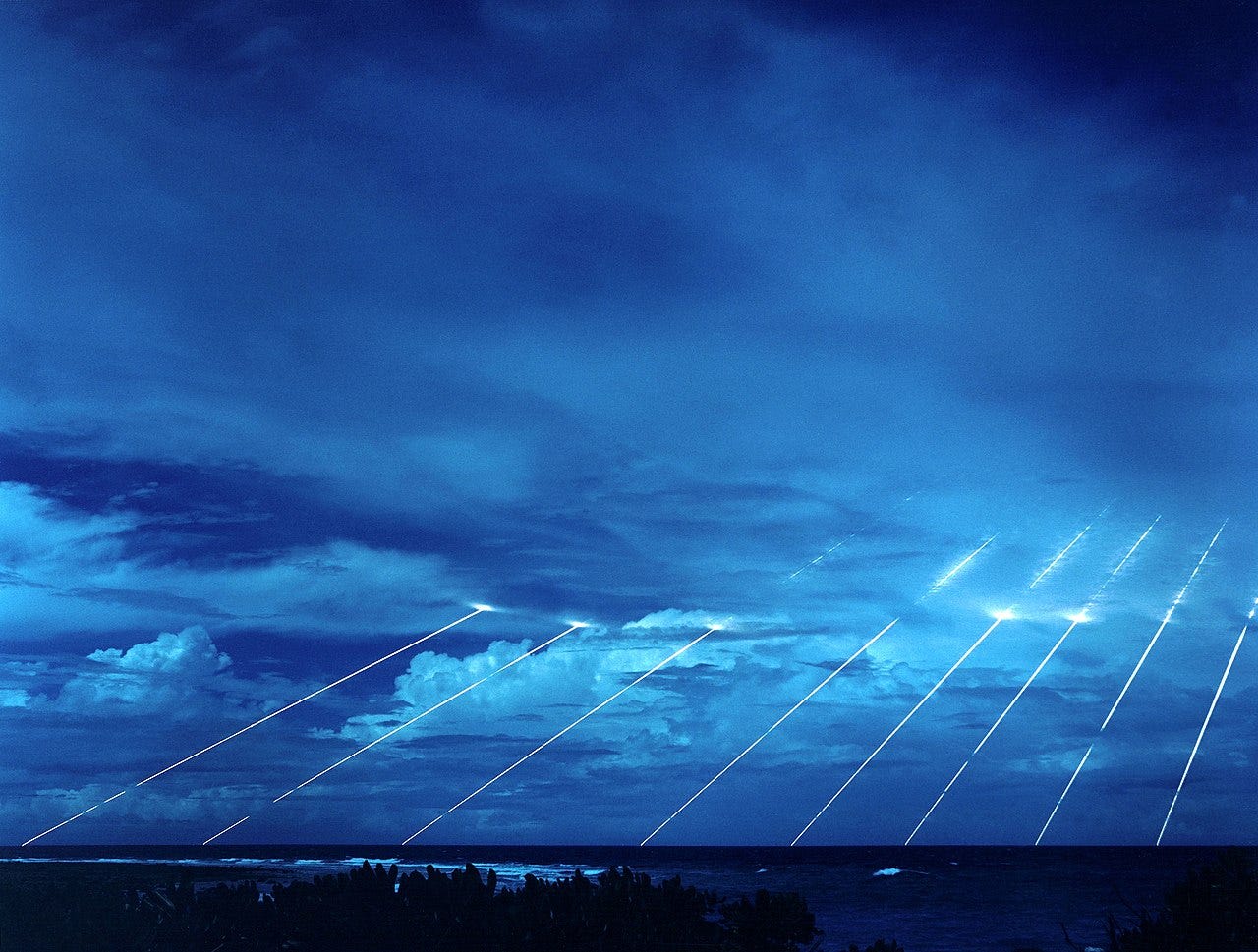
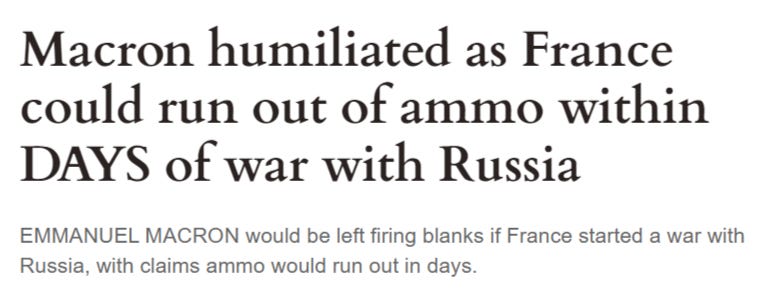
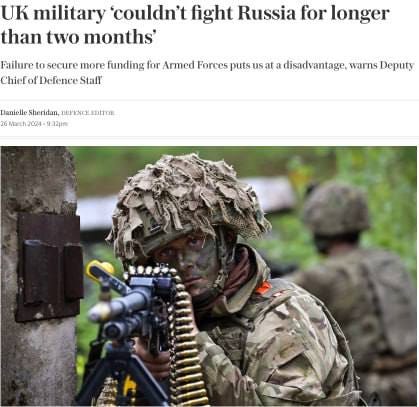
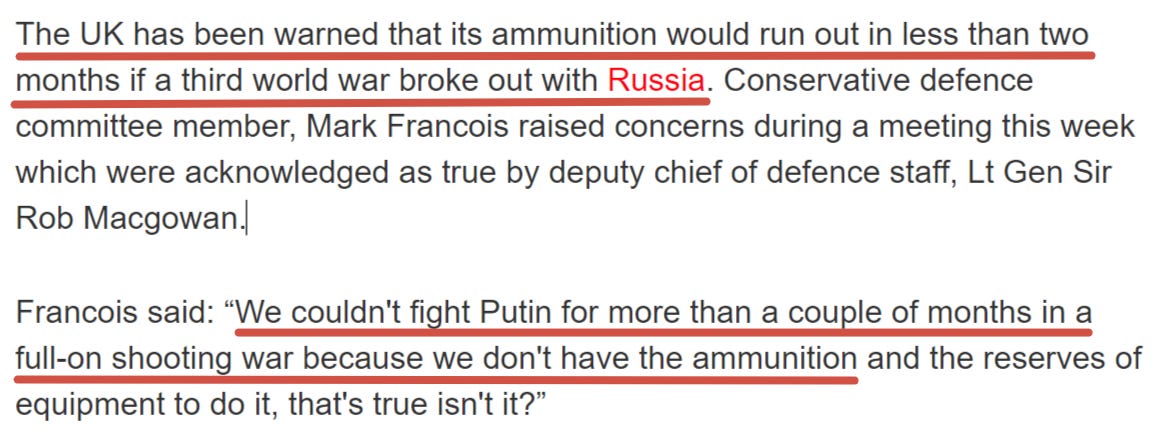
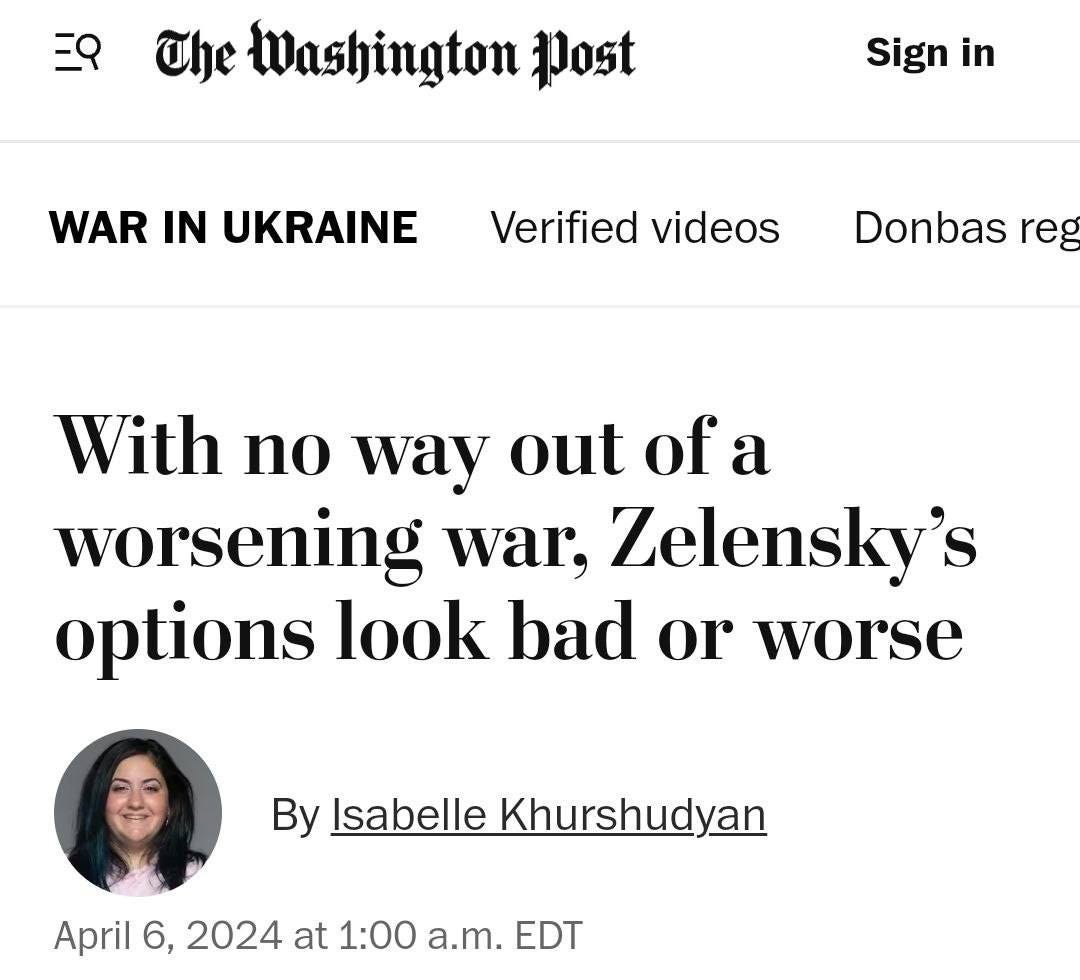

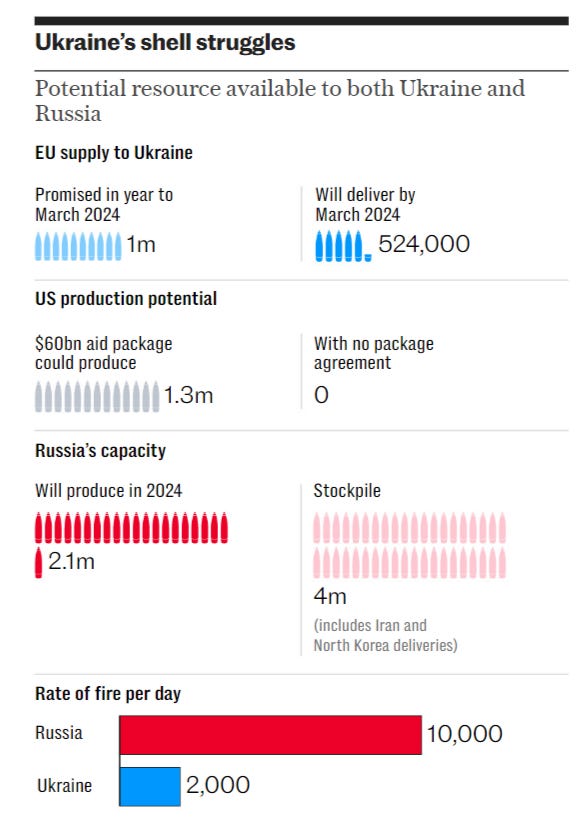






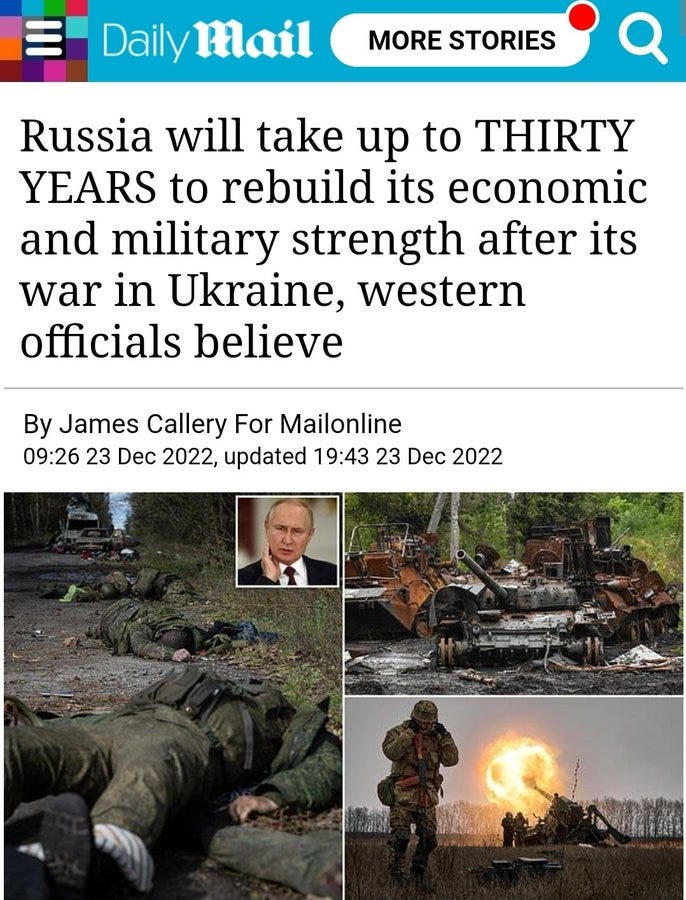
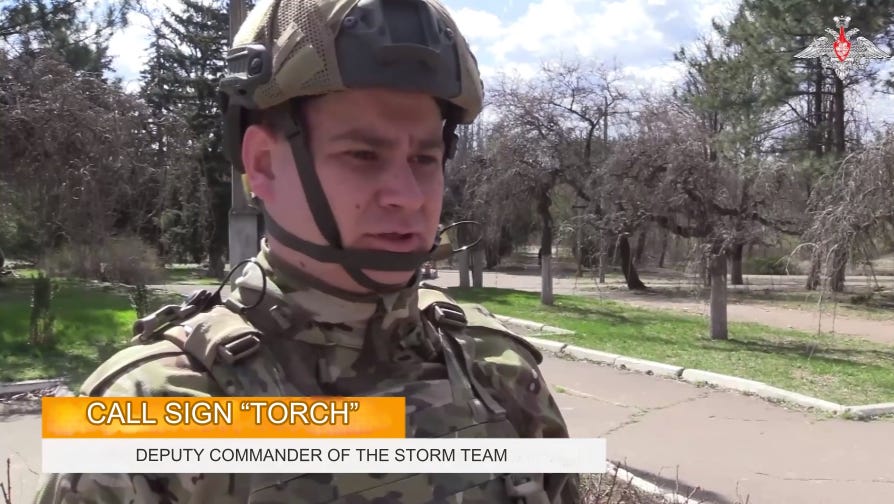
He’s Jewish.
I’m shocked, I tell you, shocked.
Why do these Zionists seem hellbent on starting WW3 and killing everything and everybody?
They’re the psychotic serial killers of mankind.
Re posting this from X
What makes the Luttwak philippic interesting is not what Luttwak is saying — But rather the extraordinary distance outside of actual reality that he and the Western courtier class now inhabits.
[Ed has been a friend and colleague: Which is to say, I have known him for 40 years, almost always sparring strenuously in academic settings, and our boisterous conversations have always been amicable — but in almost every instance, I have disagreed. Like now.]
The key takeaway from his argument, which no one should miss or dismiss, is this: Luttwak explicitly tells us that he now believes — suddenly, like so many privileged others in the Imperial Court — that a war between NATO/UKR and RUS/BLR could never escalate to nuclear use.
The sticky 'fly in the ointment' is this: Such a war would quickly, and inevitably, escalate within the expanding conventional framework of such a war itself. The consequences would be these:
First — this would no longer be a war in UKR, but rather, a war that would be fought across Europe. The network of NATO bases would all be hit by hypersonics (and other effective penetrators). NATO troop concentrations — inside and outside UKR — would be hit as well. 000's of NATO troops would die.
Moreover, the war would quickly expand to the littoral seas, and then the oceans. The approaches to EU ports would be mined, and many Western ships would be sunk. Military installations in European cities would be hit (as in UKR), setting off an uncontainable "madness of crowds."
Second — NATO forces would face not only defeat on the ground — in UKR — but storied debacle as well. Escalation here inevitably leads to a greater and more historically degrading defeat than simply letting UKR make peace on RUS terms.
Third — NATO conscription would lead to revolutions that would topple governments across EUR, followed by the fall of both NATO and the EU. Try on late autumn, 1918, across the compass of Europe.
In the ensuing panic and absolute hysteria, US 'leaders' might very well spasm into nuclear use.
In other words, the threat of nuclear initiation most likely now lies in the West (just as it is in another fraught 'region' whose warcry we stoke — and here it lies, not in Iran, but in Israel).
Luttwak is just one of our own elite class of "sleepwalkers" leading civilization, as in 1914, to the brink: And beyond!
M Vlahos from X